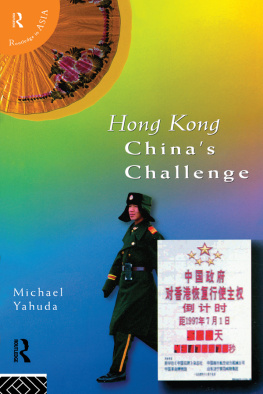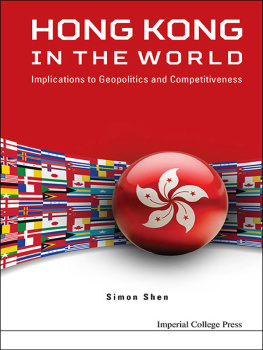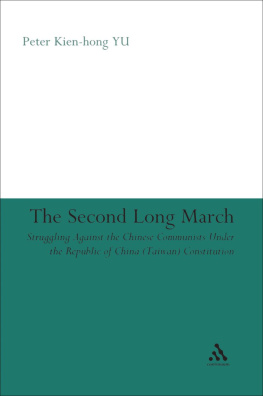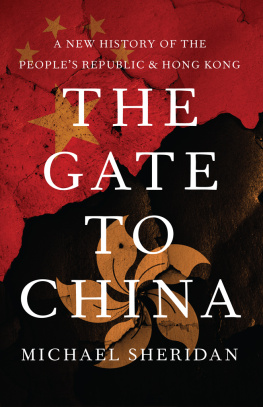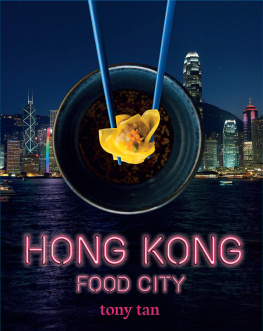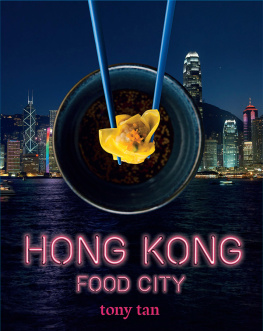WORLDS OF
MODERN
CHINESE
FICTION
An East Gate Book
First published 1991 by M.E. Sharpe
Published 2015 by Routledge
2 Park Square, Milton Park, Abingdon, Oxon 0X14 4RN
711 Third Avenue, New York, NY 10017, USA
Routledge is an imprint of the Taylor & Francis Group, an informa business
Copyright 1991 Taylor & Francis. All rights reserved.
No part of this book may be reprinted or reproduced or utilised in any form or by any electronic, mechanical, or other means, now known or hereafter invented, including photocopying and recording, or in any information storage or retrieval system, without permission in writing from the publishers.
Notices
No responsibility is assumed by the publisher for any injury and/or damage to persons or property as a matter of products liability, negligence or otherwise, or from any use of operation of any methods, products, instructions or ideas contained in the material herein.
Practitioners and researchers must always rely on their own experience and knowledge in evaluating and using any information, methods, compounds, or experiments described herein. In using such information or methods they should be mindful of their own safety and the safety of others, including parties for whom they have a professional responsibility.
Product or corporate names may be trademarks or registered trademarks, and are used only for identification and explanation without intent to infringe.
Library of Congress Cataloging-in-Publication Data
Worlds of modern Chinese fiction : short stories and novellas from the Poeples Republic, Taiwan, and Hong Kong / edited by Michael S. Duke
p. cm.
Translated from Chinese.
Includes bibliographical references.
ISBN 0-87332-757-8 ISBN 0-87332-758-6 (pbk.)
1. Chinese fiction20th centuryTranslations into English. 2. Chinese fictionTaiwanTranslations into English. 3. Chinese fictionHong KongTranslations into English. I. Duke, Michael S. PL2658.E8W58 1991
ISBN 13: 9780873327589 (pbk)
ISBN 13: 9780873327572 (hbk)
Contents
Michael S. Duke
JUST AS premodern Chinese fiction was closely linked to the narrative conventions of traditional historiography, so the twentieth-century Chinese short story has been, and to a great extent still is, heavily influenced by the writers involvement in the catastrophic events of modern Chinese history. modern Chinese writers of serious fiction have called upon themselves as committed intellectuals to play a problematic role in Chinas historical travails from the late 1890s to the present day. Ever since Liang Qichao (18731929) fled into exile in Japan after the failure of the Hundred Days Reform of 1898 and discovered the political novel, most serious Chinese writers have believed, in the words of Lu Xun (18811936), that the best way for spiritual transformation [of the Chinese people and nation] is through literature. Much of their fiction was written as part of their overall attempt to save the nation.
The writers of the May Fourth, New Culture, and Vernacular Literature movements in the first decades of this century achieved two extremely important literary triumphs. They created a new vernacular language based on the Peking (Mandarin) dialect and enriched with vocabulary and stylistic elements from European languages. Combining traditional prose styles and the conventions of late Qing dynasty novels of social exposure with various Western influences, they completed a tendency begun in the Ming dynasty and established narrative fiction as the dominant form of modern Chinese literature. Early May Fourth writers created the modern Chinese short story in the 1920s by integrating lyrical elements from traditional Chinese poetry and essay forms with Westem-style social and psychological analysis and expression.
At first their short stories, whether romantic and individualistic or realistic and socially oriented, were chiefly concerned with urban phenomena and spoke primarily for urban intellectuals. This lyrical and urban character of the modern Chinese short story did not, however, continue with the emergence of the modern Chinese novel in the 1930s. The modern Chinese novel became an increasingly rural-based panorama of social realism in which humanistic and ideologically engag writers attempted to depict the desperate problems of poverty, ignorance, cruelty, and backwardness that cried out for solution at the time. This shift from individual to social concern and from urban to rural setting was one symptom of a striking urban-rural polarity that emerged for the first time in Chinese social history in this century. The short story generally followed the novels shift in subject matter and interest. The cities, especially the eastern coastal cities led by Shanghai, were depicted as the scene of political and economic oppression and moral corruption. With the arrival of a full-scale AntiJapanese War of Aggression in 1937, modern Chinese fiction became predominantly concerned with rural life, or with the contrast between rural and urban China, and it has remained so on the mainland into the 1990s.
The mainstream of traditional or premodern Chinese literature was lyric poetry in a subjective mood. The blending of this tradition, together with a Western-influenced new consciousness of individual human personality (humanism, hu-manitarianism, and individualism) and Chinas perennial Confucian humanism, resulted in the finest works of modern Chinese fiction: the psychological and the social short story. In Jaroslav Pruseks succinct description,
The psychological short story creates a complex composition by skillful stratification of various experiences and emotions relating to different times and places; and although it embodies a number of heterogeneous elements it is yet absolutely homogeneous in its spiritual atmosphere. The social short story recasts some personal experience of the author, so that its facets reflect the most fundamental problems of human existence and of the social situation of the time. This power of reflecting the whole cosmos in a single detail is a legacy which has been taken over from Chinese poetry by modern literature, especially in its concentrated form of the short story.1
The other side of the modern Chinese writers commitment to truthful and ameliorative reflection of social reality in a nineteenth-century realist mode was too great a dependence on unmediated reality. This excessive reliance on life as opposed to art acted as a curb both to the imaginative transformation of raw reality and to the expression of more profound thought in fiction. C. T. Hsia coined the term obsession with China to describe and explain this artistic drawback in modern Chinese fiction. modern Chinese writers have often been so concerned to get their message across, to make their theme understandable to even the most naive of readers, that the more imaginative, creative, or artistic elements of their craft have been sadly neglected. In periods when this freely chosen intellectual predisposition of Chinese writers has been insisted upon by the literary bureaucracy and enforced by the security apparatus of the state, the Chinese short story has often degenerated to the level of party propaganda. Such a tendency existed from the founding of the Peoples Republic in 1949 to 1977 and was extremely pronounced during the ten years of the Great Proletarian Cultural Revolution, 196676.
Despite these artistic shortcomings, which severely hampered its success in English translation, the modern Chinese short story has always been a living literature with a voluntary reading public numbering in the hundreds of millions. Chinese readers read it in search not only of artistic experience, but also of important ideas and information about Chinese social life and individual character. Fiction still has a far greater impact on the individual and society in China today, both in the rapidly modernizing Peoples Republic and in the highly modernized Taiwan, than it does in the United States.


